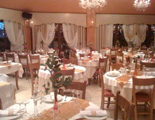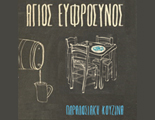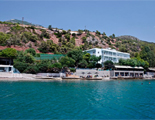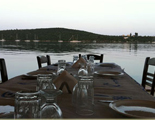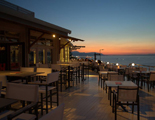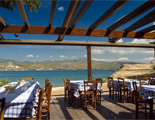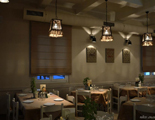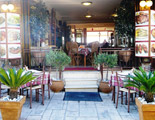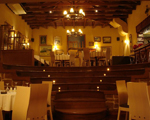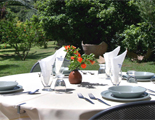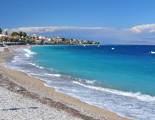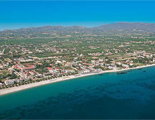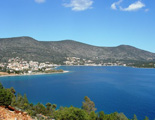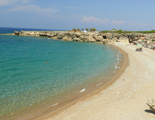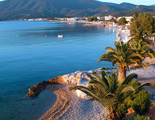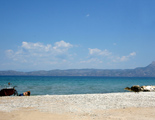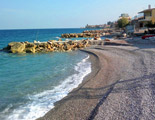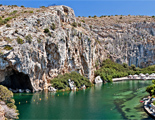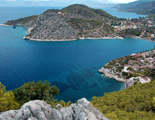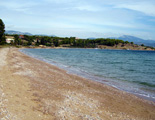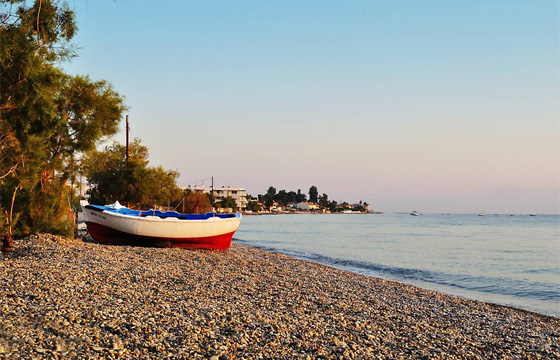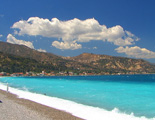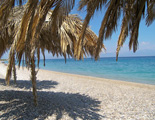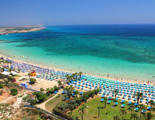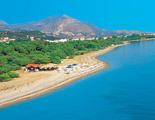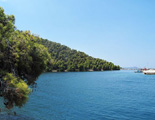 Corinth Travel Guide
Corinth Travel Guide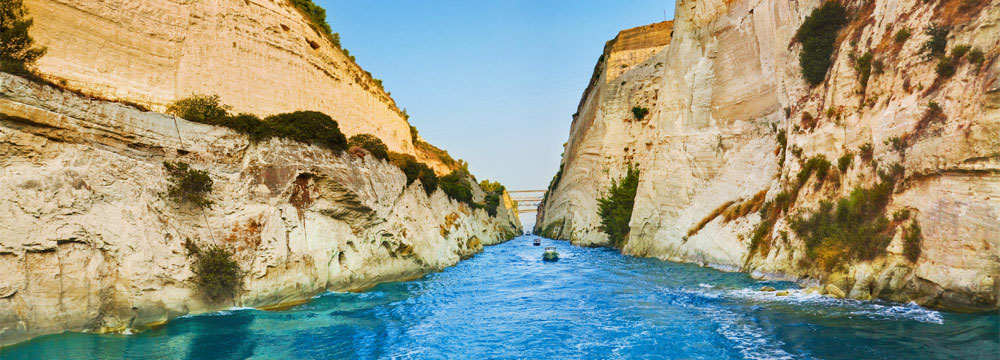
The initial name of the town of Corinth was Ephira as it was named after the daughter of Oceanus who established the town. So, the area around Corinth was named Ephirea at the time.
However, later on, Ephirea was divided in two and it was given to the two children of Ephira: Aloeas and Aeitis. When Aeitis left for Kolchida, he left his share to Vounos, the son of Hermes, who in turn left his share to Aeitis’ nephew, Epopeas. When Epopeas died, Ephirea belonged to his grandchildren, Sikionas and Corinth. Corinth was a popular hero at the time and the area was finally named after him.
Another explanation of the name of Corinth is that in the Pelasgian dialect (the Pelasgians were the first inhabitants of the area in the Prehistoric Era), “Corinth” means link, intersection; and Corinth is exactly the place were two seas and two parts of land intersect.
Corinth was inhabited in the 6th millennium B.C. and the most renowned prehistoric settlements were situated in Korakos, Aetopetra, Lechaio, Arapitsa and Akrocorinthos. The first Corinth’s inhabitants were the Pelasgians, followed by the Phoenicians, who introduced livestock and the worship of god Melkarth and goddess Aphrodite. Around 2000 B.C., Achaioi and Aeolians dominated the area, until Dorians arrived in 1000 B.C. The Dorians established aristocracy (oligarchy) as the system of governance in Corinth. In the 12th century B.C. Corinth participated in the Trojan War.
During the Ancient Times Corinth was powerful and prosperous. The inhabitants’ activities were agriculture, commerce and maritime. Oligarchy was still the system of governance and the dynasty of Vackhides was dominant in the 8th century B.C. and the first half of the 7th century B.C.. The triremes of Corinth controlled the seas and transported products and people to several different places; this is the time that Corinth established colonies in Syracuse (Italy), Corfu (Ionian Sea-western Greece) and Potidaia (Halkidiki-northern Greece). However, starting from 700 B.C., Corinth had to face competition in the sea coming from Athens and Corfu. In 657 B.C., Kipselos became the first tyrant of Corinth.
From mid-4th century B.C. till mid-3rd century B.C. Corinth belonged to the Macedonians but it was rather free and the inhabitants were very active in maritime, commerce and artisanship. Afterwards, it became part of the Achaean confederation.
The Roman general Mommius conquered and destroyed Corinth in 146 B.C.. The town was completely ruined and burnt down, male inhabitants were killed whereas women and children were sold as slaves. The town remained uninhabited till 44 B.C., when Julius Cesar decided to build a new city on the ruins of the old one and gave it a significant role in the Roman Empire by making it the centre of governance of the northern Peloponnese. In 67 A.D. Neron organized a celebration related to the initiation of the works for the Canal of Corinth but the process stopped when he died.
The visit of Saint Peter in 52 A.D. helped establish Christianity in the wider area and also in Greece.
During the Roman Times, Corinth was very prosperous; but with the fall of the Roman Empire the town was destroyed again by the Goths and the Heruli.
In the Byzantine Times Corinth was powerful and of strategic importance; not only was it the capital of the Peloponnese, but for a period of time, it was also the capital of the Byzantine Greece. During the reign of Justinian the town was several times attacked by barbarians and Justinian built the Justinian Wall called “Examillion”, part of which is still standing today. In the middle of the 12 century A.D. Corinth was destroyed once again by the Normans.
In 1208 the Francs conquered Corinth and this was the beginning of a difficult period; the area was inherited and gifted several times to different sovereigns, until it was given in 1358 to the Florentine nobleman Nicholas Atsagioli. His heirs sold it in 1395 to the Knights of Rhodes and took it back in 1408. But the town was already in decline and nothing reminded of its glory and power during Roman Times.
The Ottoman Era began in 1458, when Mahmut Pasas conquered Corinth, and lasted till 1822, with a short break from 1699 to 1715 when the Venetians took over. The years from 1715 to 1822 were very difficult and violent. After Greece’s liberation, Corinth was -along with Nafplio and Athens- a candidate capital of Greece.
Today, Corinth is a lively city with almost 60,000 inhabitants, while the prefecture of Corinthia has about 150,000 inhabitants. Despite its destruction by earthquakes (in 1858 and 1928) twice, it has been rebuilt and its canal attracts a plethora of tourists from all over the world.The prefecture ofCorinthia is famous for its wines and raisins, and agriculture, along with tourism, is among the top occupations of its inhabitants. The area hosts an industrial zone and refineries, as well as dazzling beaches, exceptional mountainous resorts and multiple accommodation choices.
Corinthia prefecture is a diversified destination featuring seaside towns and settlements while its mountainous part, Orini Corinthia, boasts some of the best winter destinations like Trikala, Feneos and Gkoura for unique escapes within snowy mountains, lakes, fir forests and rivers.
Sisiphus was the first king of Corinth. According to the Greek Mythology he managed to trick Hades by putting him in jail. So, no one died for quite a long time even very ill or injured people. The gods of Olympus were very upset and Aris liberated Hades, who took Sisiphus to the “world of the dead”.
But Sisiphus was very cunning and had asked his wife not to honour him properly after his death. Thus he asked Hades to let him return to the world of the living in order to complain to his wife for not mourning, under the condition that he would return to the “underworld” after a while. Hades agreed, but Sisiphus did not return.
So, Hermes forced him to go back to the world of the dead. Then, he was punished with an eternal penalty: he had to roll an enormous rock to the top of a hill and when the rock arrived to the top, it tumbled back down; and this went on forever.
Vellerefondis was a famous Corinthian hero. He was the son of Glafkos and the grandson of Sisiphus. After killing Velleros, he was forced to leave Corinth. So, he went to Tyrinth where queen Andia, wife of king Proitos, fell in love with him.
But Vellerefondis let her down so she talked against him to her husband. As a result, Proitos sent him to his father-in-law, Iovatis, the king of Lykia in western Asia Minor, asking him to kill Vellerefondis. Iovatis preferred to assign him three almost impossible missions: to fight against the violent people “Solimi”, to face the Amazons and to fight Chimaera, the monster that was a lion in the front and a dragon in the back.
In all three cases, Vellerefondis won. After his success Vellerefondis returned to Lykia and Iovatis agreed to give him his daughter, Amphiklia, as his wife.
However, Vellerefondis believed he was very powerful and tried to go to Olympus in order to see where the gods lived. The gods were furious and Zeus threw a thunder on him which lead to his paralysis and his losing the kingdom of Lykia, as well as his horse Pegasus.
Jason and Medea went to Corinth as they were chased by Akastos, the son of Pelias (Jason had asked Medea to revenge Pelias and she told her daughters to cut his body and boil it in order to make him young again). The myth says that the couple lived very happily in Corinth until Jason left Medea in order to marry Glafki, the daughter of king Kreondas.
One of the Labours of Hercules was to kill the horrifying Stimphalian Birds who lived in Lake Stimphalia in Corinthia and had metallic feathers and beaks of bronze, destroyed the land and ate people. Hercules managed to kill them by using a special rattle in order to frighten the birds and get them to fly, and then he shot them with his arrows. A few birds managed to fly away but never came back.
According to the Greek mythology Hercules accomplished another Labour in Corinthia: he killed the Nemean Lion who lived in the area of Nemea and had a fur that was impenetrable by weapons. Hercules managed to get the lion into a cage with two entrances, blocked the one entrance with a huge rock and then strangled the lion to death.
Τhere are six caves in Corinthia, all situated in the western part of the prefecture: the Cave of Hermes at an altitude of 1700 m. is the place where Hermes was born. This cave has 8 rooms and it is about 1200 m2.
Another cave at a high altitude is the Cave “ Tripa” Feneou (“ tripa” stands for “hole” in Greek). At 1800 m. on mountain Durduvana, this cave has 4 huge holes, an underground lake and 8 rooms. Many people were thrown in its huge holes and killed during World War II.
The Cave of the Englishmen was named after Englishmen parachutists who used it as a shelter during World War II and it is comprised of two large rooms.
The Cave of Virgin Mary of the Rocks is situated close to the village Kato Tarsos and it is divided in two levels: in the lower level there is a little church devoted to Virgin Mary.
The Cave Katavothres Feneou, close to Mati village, is quite impressive. It has 4 sinks. All the above caves are open to the public, but guides and special equipment is needed.
Finally, there is one cave that is not open to the public; the Cave of Lake Stimfalia.
It is not very common in Greece that a prefecture hosts more than two lakes; Corinthia hosts four: Lake Doksa, Lake Stimfalia, Lake Dasiou and Lake Vouliagmeni. All four are gorgeous but lake Doksa stands out with its picturesque chapel of Saint Fanourios right in the middle of the lake.
Sousaki is a volcano that exploded about 2.7 million years ago. It is situated close to the village of Agii Theodori but as it is a little hard to find, it would be wise to ask the locals for directions. Arriving to the volcano crater requires walking and climbing up a canyon which is relatively easy to pass through. On the way, you will meet a little lake and a waterfall, while the ground is hot and there are beautiful stones. Of course, attention is required.
Corinthia has many monasteries and churches spread across its towns, villages and mountains. Among the ones worth visiting are: the Monastery of Saint Patapios at about 8 km. from Loutraki, which is situated at an altitude of 700 m. on Gerania Mountain. The monastery hosts the Church of the Resurrection of Virgin Mary with a beautiful lattice wooden temple and the hermitage of Saint Patapios carved in a rock.
The Monastery of Lechova at 4 km. from the village Krionio, is found at an altitude of more than 1000 m., where part of the Church was built in the 11th-12th century B.C. and it has been declared an archaeological landmark by the Ministry of Culture
The Monastery of Prohpet Elias in Zacholi on the foot of Mount Mavro at about 20 km. from Derveni, which was built in the 14th century B.C., has a very interesting architecture and was used as a secret School for the Greeks during the Ottoman domination.
The Monastery of Saint Vlasios in Ano Trikala with its imposing white church and a historic Orthodox Image of Saint Vlasios.
Characterized by its very impressive size and architecture, the Monastery of Faneromeni in Chiliomodi is situated in a gorgeous pine forest and features the “old” and the “new” monastery in the same site.
The Metropolitan Church of Apostle Paul in Corinth really stands out due to its imposing three arches and its vast space of 800 square meters. Besides, it was established by Apostle Paul himself in 52 or 52 B.C.!
Finally, another church worth visiting is the Church Virgin Mary of Prathi at 1150 m. high on Mount Gerania, which is actually comprised by two churches: the old one that was built using stone blocks in the early 11th century and the new one that hosts 12 coveralls paintings.
With such a long and significant history, it is no wonder that the prefecture of Corinthia hosts four archaeological museums and one historic museum.
The Archaeological Museum of Ancient Corinth is situated in the archaeological site of Ancient Corinth and hosts objects of ancient Corinthian art coming from the Geometric period, statues of the 1st and 4th century B.C., vases, inscriptions, sculptures, and fantastic Roman mosaics.
The Archaeological Museum of Nemea was created by archaeologists of the University of Berkeley and it was granted to Greece in 1984. It hosts objects from the famous Mycenaean cemetery at Aidonia, also known as the Aidonia treasure, and various objects including jewels, tools, weapons, inscriptions and ceramic objects coming from the Prehistoric and Ancient eras.
The Archaeological Museum of Isthmia was inaugurated in 1978 and hosts ancient objects from Isthmia and the ancient port of Kechries. What will amaze visitors is the unique collection of eighty seven “Opus Sectilae”, i.e. artistic creations made of ivory and glass in the form of mosaics. These were brought to Kechries either from Italy or from Egypt in 375 B.C. and sank due to an earthquake the same year in the bottom of the sea. They were eventually discovered in 1976!
The Archaeological Museum of Sikiona is housed in the building of the Roman Baths and it is situated within the archaeological site of Sikiona. It hosts figurines, inscriptions, ceramics and sculptures, as well as objects of Mycenaean pottery.
The Historic / Folklore museum of Corinth presents its collections in three floors. Exhibits include tools and objects of the everyday life, local traditional costumes and costumes from other places in Greece, rural objects and artistic objects.
Last but not least, the Environmental Museum of Stimfalia stands out in a hill over the Stimfalia Lake The museum presents the flora and fauna of the area and explains displays how the environment was incorporated into the activities of the local people through local customs, rural activity, livestock and the Hadrian's Aqueduct.
The prefecture of Corinth is full of gorgeous villages, both coastal and mountainous. The mountainous villages have mostly maintained a strong folklore character. Among the mountainous villages worth visiting are Trikala with their famous ski resort, Evrostini, a village among pines and plane trees with a stunning river running through it, the historic village of Kastania with its lovely traditional stone houses which used to be surrounded by a forest of chestnuts destroyed in 1825 (“kastano”=chestnut in Greek), Lafka that also called “small Switzerland” due to its beautiful natural ambience full of pine trees, Goura with a fantastic central square and an interesting traditional architecture, and Pisia, a small village surrounded by pine trees offering a spectacular view of the Corinth Bay.
Of course, there are several coastal villages and towns worth visiting, like Loutraki, Ksilokastro, Derveni, Loutra Oraias Elenis, Agioi Theodoroi, and Schinos, which all offer fantastic beaches and diversified accommodation proposals. Finally, the area of Nemea with its famous wineries is certainly worth a visit.
Corinth is the capital of the prefecture; it is a contemporary city with a lively port, a renowned canal and a long history. It hosts museums and interesting archaeological sites, as well as the Church of Apostle Paul. The town centre is pedestrian and it is a vibrant commercial area.
“Akrocorinthos” is the name of the rocky hill that stands at the edge of Corinth high above; Ancient Corinth was situated in the foot of this hill and the city’s castle was built on its top. A significant part of Ancient Corinth is visible today in the homonymous archaeological site, which comprises of the Ancient Temple of Aphrodite, ruins of ancient houses and towers, gates, a Frankish tower and a Byzantine cistern. The Archaeological Museum of Corinth is also hosted within Akrocorinthos, so a visit is certainly a must!
The archaeological site of Sikiona is quite impressive as well, since it comprises of a large ancient theatre, a wrestling ring, a temple of Artemis or Apollo, a parliament and a long gallery. Next to the findings of the Ancient Era, there are ruins of the Roman Baths, part of which are in good condition and house the Archaeological Museum of Sikiona.
The archaeological site of Feneos is situated in the village of Ancient Feneos or Kalivia and includes an ancient temple devoted to Asclepius and parts of two huge statues representing Asclepius and Hygeia.
The archaeological site of Nemea hosts the grandiose Temple of Zeus, built in the 4th century B.C., which comprised of thirty six imposing columns nine of which are visible today, and the impressive Stadium. Findings from the excavations are housed in the homonymous archaeological museum.
The archaeological site of Stimfalia is half-sunk under the waters of Lake Stimfalia; the ancient city of Stimfalia was built in the northern part of the lake. What visitors may see today are the ruins of an ancient theatre, ruins of houses and public buildings, as well as wrestling rings.
The archaeological site of Heraion in Loutraki is comprised of the Ancient Temple of Hera, a large cistern, a second smaller temple, and dining halls.
Apart from the archaeological sites, the prefecture of Corinthia has many treasures, like the breathtaking views of the itinerary connecting Loutraki to Alepochori (in the prefecture of Attica), the coastal pine forest of Pefkias in Ksilokastro, or the underwater city in the coastal village of Mavrolimni. Visitors should definitely drive around and ask locals for extra information on sightseeing suggestions and landmarks of each area.
CLIMATE
The climate in Corinthia is terrestrial Mediterranean, with hot summers and relatively mild winters. The maximum temperature in June, July and August is over 35°C, whereas the average yearly temperature is around 19°C. However, during the winter there is also snow in the mountains of the prefecture. In total, Corinthia enjoys about 2650 hours of sunshine per year.
TELEPHONE
The national prefix for Greece is +30 if you are calling from abroad. All numbers in the capital Athens start with the prefix 210 and are followed by 8 digits (e.g. 210-3227400).
The Area Code for Corinth is: +30 27410. However, this is not valid for all the areas in the prefecture of Corinthia. For example, for Kiato the prefix is +30 27420, for Ksilokastro it is +30 27430 and for Loutraki it is +30 27440. If you wish to call abroad, you have to start by dialling the other country’s national prefix (i.e. 0049 for Germany, 0044 for England etc.) and continue with the area code and the number where you wish to call.
CURRENCY
Euro €
Euro Coins: 1 and 2 euro coins (gold and silver colour), 10, 20 and 50 cents (gold colour) 1, 2 and 5 cents (copper colour)
1 euro = 100 cents / centimes.
Euro Bank Notes: Are available in 5, 10, 20, 50, 100, 200 and 500. It is not always easy to receive change for 200 and 500 Euro Notes.
BY AIR
There is no airport in Corinth. However, the prefecture’s capital is only a one-hour drive from the Athens International Airport “Eleftherios Venizelos”.
BY BOAT
Corinth is connected by boat to Patras (Greece), Catania (Italy) and Genova (Italy). The boat departs from Corinth every Tuesday.
For information on ports and schedules, visit the following link:
www.grimaldi-ferries.com/en
BY CAR/KTEL
Corinth is connected by KTEL with all big Greek cities. The trip from Athens lasts about 1 hour. More information on itineraries and schedules are available here.
BY TRAIN
Corinth is connected with Athens via train, the suburban railway. This train is very quick and the trip duration is about 1 hour. More information is available at: https://tickets.trainose.gr/dromologia/
LOCAL BUSES
Local buses interconnect several areas of the town of Corinth. They usually pass every half an hour. More information is available via the municipality of Corinth. In order to travel between the various regions of the prefecture, it is advisable to have your own car. Otherwise, details on long distance buses (KTEL” could be found here.
TAXI SERVICE
Taxis are available in many spots of the town of Corinth, but also in the various regions of the prefecture.
Corinth Taxi Service: Tel.: +30 27410 73000
Union of Taxi Owners of Corinth: Tel.: +30 27410 24844
Agii Theodori Taxi Service: Tel.: +30 27410 68200
Union of Taxi Owners of Ksilokastro: Tel.: +30 27430 22001
Syndicate of Taxi Owners of Vrachati: Tel.: +30 27410 55790
BANKS & ATMS
There are many banks in the prefecture of Corinthia, situated in Corinth (about 25 bank branches), Kiato (14 bank branches), Loutraki (12 bank branches), Ksilokastro (9 bank branches), Nemea (4 bank branches), Vrachati (2 bank branches), Sofiko (1 bank branch), Loutra Oraias Elenis (1 bank branch), etc.
MONEY EXCHANGE
Money can be exchanged in the bank branches listed above.
POST OFFICE
The Greek post office is called ELTA and you can find the main post offices of the island in Hora where there is also a branch of the Hellenic Post Bank. Post Boxes in Greece are YELLOW for normal post, usually with 2 slots for INTERNAL POST (meaning inside Greece) and post for ABROAD. RED Post Boxes are rarer and they are used for URGENT mail. You shouldn’t expect to find such boxes in the island. REGISTERED mail is always handled and given a receipt for at the POST OFFICE.
There are post offices in all the big villages of the prefecture of Corinthia. In Corinth, the post office is located in the town centre.
Corinth Post Office: 35 Adimantos Street, Tel. no: +30 274102 4122
POLICE STATION
Corinth Police Station: Tel.: +30 27410 77250, +30 27410 77263
MUNICIPALITY OF CORINTH
The biggest and central municipality of the prefecture of Corinthia is the Municipality of Corinth: www.korinthos.gr (page only in Greek).
Tel.: +30 27413 61000, +30 27413 61040
Email: [email protected]
- Radio Taxi: +30 27410 24844
- Corinth Port Authority: +30 27410 28888
- Hellenic National Meteorological service: +30 210 9699101-3
- Elpa (Car breakdown tourist information service): 174
- Police: 100
- Fire Department: 199
- Ambulance: 166
There are various medical centres in the various regions of the prefecture but there is also the hospital of Corinth in case extra attention is needed.
Corinth General Hospital: +30 27413 61400, 27410 25711, 53 Athinon Avenue, Corinth town, email: [email protected]
PHARMACY
There are about 120 pharmacies in the prefecture of Corinthia, situated in Corinth, Loutraki, Ksilokastro, Derveni, Vrachati, Agii Theodori and in almost every large village.
Kiato is a lovely beach, situated in the northern part of Corinth prefecture and in the southern part of the Corinth Bay. The beach has pebbles and deep, refreshing waters, while it hosts beach bars, sunbeds and umbrellas and taverns. This is the ideal beach for youngsters since it hosts lively parties in the afternoons or in the night. Moreover, as the beach is idyllic during the night, a night swim here is a great idea!
Vrachati is a pebbled beach with turquoise waters at only 12 km. from Corinth. The waters are deep, crystal clean and turquoise, whereas the beach is “divided” in two by a small port; next to the port, there is a secondary sandy beach. Vrachati visitors are quite unlikely to get bored; apart from enjoying a fantastic swim, the beach is ideal for kite surf and also hosts beach tennis tournaments. So, beach fun is guaranteed!
Situated in southeastern Corinthia and very close to the prefecture of Argolida, Korfos is a picturesque fishing village ideal for a relaxing vacation. The beach of Korfos is surrounded by pine trees and olive trees, a fact that explains its gorgeous turquoise waters. The beach has a mix of pebbles and sand, whereas the sea here is mostly calm. The natural beauty of the area is unique and it is perfect for exploration; on foot, bike or a rented boat!
Stomio is located in northwestern Corinthia, very close to the point where Corinthia ends and Achaia begins. The beach is very tranquil and has pebbles and transparent waters. There are no amenities offered, so towels, umbrellas, water and snacks are indispensable. However, Stomio compensates visitors with its serenity and its unique sunset; the sun sets in the reddish sky behind the shadows of gorgeous hills, creating the absolute romantic scenery!
Loutra Oraias Elenis is a picturesque coastal village located in the Saronic Gulf. Its beach is beautiful, with pebbles, small rocks and crystal waters. Right next to it, there are the famous thermal waters of Oraia Eleni (beautiful Helen in Greek), named after the beautiful queen Helen of Troy, who used to bathe here. Close to the beach, there are taverns, cafeterias and accommodation.
Lechaio is a picturesque coastal village with a long history, since it was one of the two ports of Ancient Corinth. The beach has lovely pebbles and interesting rock formations, while right next to it, there are the ruins of a Christian Basilica church. The area around the beach also hosts ruins of ancient buildings that were part of the ancient port, as well as ruins of ancient temples devoted to Isis and Artemis. There is also an organized camping.
Pefkakia beach is a lovely sandy beach in Agii Theodori, at only 65 km. from Athens. The beige sand, the azure waters, the pine (“pefka” in Greek) and tamarisk trees on the beach, all create an atmosphere of relaxation. There are several amenities on the beach like sunbeds, umbrellas and refreshments/light snacks. Pefkakia is an ideal location for fun and relaxing moments, especially for families.
Loutraki is a long beach of about 3 km. with small pebbles and deep, transparent waters. Swimmers may enjoy the wonderful view of the Corinth Bay and a plethora of amenities: taverns, sunbeds, umbrellas, beach bars, showers and a lifeguard. Or they may just choose to swim in the tranquil parts of the beach. Loutraki is renowned for its thermal waters and attracts numerous visitors, offering a wide range of accommodation choices and sightseeing proposals. So, a one-day visit is not enough.
Vouliagmeni “Lake” is actually a beautiful lagoon connected with the Corinth Bay via a narrow channel. Around the lake, which is also called “Lake of Iraio” due to the fact that there is an ancient temple of Goddess Hera nearby, there are all kinds of beaches: sandy beaches, pebbled beaches and rocky beaches. But what they all have in common is the leeward waters. There is also the option of water sports, as well as taverns and bars.
Nestled in a dazzling narrow inlet of the Corinth Bay, very close to the point where the Attica Prefecture ends and Corinthia begins, Schinos awaits demanding visitors who seek for the best: transparent azure waters, heavenly landscape, dolphins, sea turtles, and pine trees hanging over the sea. The area is ideal for fishing and also for boat explorations as it hosts caves, splendid bays and secluded beaches. Schinos beach also offers a lively beach bar, taverns and a small port.
Situated in southeastern Corinthia, at 16.5 km. from Corinth, Almiri is a beautiful beach with uniform white pebbles and greenish waters, surrounded by rocky hills covered with pine trees. The fantastic harmony of colours and the serenity of the landscape create an amazing ambience of peace of mind. Swimming in Almiri offers a unique rejuvenating experience, where the body and the mind are in total balance with the natural environment.
Kechries is considered among the most beautiful beaches of Corinthia due to its size and its fantastic golden sand. Its short distance from Athens (about an hour) makes it a popular swimming destination during the weekends, when it is usually very crowded. However, the waters are almost always clean and the beach is ideal for families, since the sea is quite shallow. Next to the beach, which also hosts a beach bar, there are the ruins of Corinth’s ancient port.
Kokkoni is a beautiful pebbled beach in the Corinth Bay, between Vrachati and Kiato. The pebbles are white and light grey, whereas the waters are azure! Although Kokkoni beach is next to Vrachati beach, it is far more quiet and less crowded, providing space for everyone. One part of the beach offers amenities like sunbeds, umbrellas, snacks and refreshments, and there are also some accommodation units.
Right next to the prefecture of Arcadia, Derveni is just the perfect way to leave Corinthia. The village has beautiful traditional houses with red roofs and high windows, while the beach is gorgeous, with uniform grey pebbles and crystal clear waters. Moreover, it is a great idea to enjoy an afternoon swim in Derveni, since the sunset is impressive: all shades of the red colour literally “paint” the sky and the sun sets behind the lovely hills of Arcadia.
Right after Kiato beach, the beach of Kato Diminio is an alternative, less crowded choice. It has small and medium sized pebbles, while there are also umbrellas and sunbeds. Here, the waters are transparent and green since a plethora of trees surround the beach and reflect in the waters: pine trees, tamarisk trees and even palm trees, stop right where the pebbles begin! This is just the perfect combination of and organized beach and utter relaxation!
Melissi beach is the beach of the homonym coastal village, which is situated in northern Corinthia, very close to Ksilokastro. The beach is very long and it has small pebbles, whereas the sea water is turquoise right next to the coast and turns azure and dark blue as it gets deeper. In Melissi there is much space and tranquillity. Here, nature lovers will certainly be satisfied and serenity seekers will certainly come back!
Pefkias is a unique pine forest next to the sea! This one of a kind pebbled beach is wide and has transparent waters, while it has been the inspiration of poets like Konstantinos Kariotakis in his poet “Sleep”, where it is mentioned as “the green shore”. The pine trees are quite high and their dark green colour is in perfect harmony with the grey pebbles and the blue sea. Pefkias is certainly a beach worth visiting!
Mavrolimni is a small pebbled beach in a splendid lagoon, next to the borders with Attiki. As its name suggests (Mavrolimni means "black lake" in Greek), the bottom is dark and volcanic. Mavrolimni is a perfect place for scuba diving since there is a sunken city in the lagoon's bottom. The waters are transparent and this beach is never crowded, not even during the summer weekends. Fresh fish is served in a tavern next to the beach!
The prefecture of Corinthia combines elements of both Central and Southern Greece cuisine, along with insular and mainland recipes. The result is a very interesting mixture of tastes and ingredients.
Made of frumenty, flour, onions, olive oil, milk, feta cheese, butter and eggs, “trachanopita” is a very nutritional dish that everyone loves. It is also a great snack for in-between meals!
This is Corinthia’s version of pumpkin pie, a very common dish throughout Greece. Apart from pumpkin, dough sheet, butter, sugar and cinnamon, this pie also has raisins and raisins juice which give it a unique sour-sweet taste!
This is an authentic mountainous recipe based on veal, tomatoes, onions, garlic and potatoes, all cut in pieces. After putting salt and pepper on the meat, every piece of meat is wrapped in a different package of parchment paper along with pieces of tomatoes, onions, garlics, potatoes, and some butter. All packages are placed in a hull and the hull is placed in the oven for a couple of hours. The aromas of the vegetable and meat stay within the package and create a fantastic taste.
This could be the traditional recipe of an Aegean Island. It stands out because flounder is marinated in must, salt and pepper, then it is sautéed in olive oil, and it is finally doused with Nemea’s wine.
This is a traditional recipe of the mainland; goat meat is boiled (adding some butter, thyme and cloves in the water) and it is served with pasta, preferably handmade.
Apricots are sautéed in butter, doused in ouzo and then boiled in grapes juice, honey, and lemon zest. This is a delicious desert!
Corinthia is famous all over the world for its raisins and its wine. However, there are also other products that are of fantastic quality, available in Corinthia.
Corinthia’s dried raisins are of top quality and nutritional value. Whether “black” or “soultanina”, they are delicious and very easy to carry home.
The area of Nemea is renowned for its unique wines since the Ancient Era. There are several different types of wine produced in Corinthia: Agiorgitikos, Cabernet Sauvignion, Merlot, Syrah, Alepou, Savvatiano, Chardonnay, Viognier, Sauvignion Blanc and Roditis are among them. Agiorgitikos is the most famous red wine of Greece!
The groves of Corinthia are mostly organic, so the olive oil and olives produced are of fine quality. Visitors should taste black olives, green olives and “throuba” before deciding which to bring home.
The gorgeous pine forests of Corinthia are just the right place to produce honey. Apart from honey, visitors should definitely buy honey-related products, like royal jelly. Of course, there are many different varieties of honey available!
In the Corinthian prefecture, nature is at its best. So, what a better place to buy herbs? Thyme, oregano, sage and tea are surely good choices!
The feta cheese of Ziria is just fantastic; full in taste and made of a mixture of goat and sheep milk, it is a product of protected designation of origin.
There are several interesting events organized in different places of the prefecture all year long.
In the beginning of autumn, the Winemakers Association of Nemea and the Municipality of Nemea organize the “Big Days of Nemea”, where visitors may taste wine and participate in its production.
Summer visitors of Sikiona may enjoy a whole series of events under the name “Sikionia”, which include concerts, theatre plays, athletic games, dancing festivals, exhibitions and festivals.
Similar events are organized in Corinth during July and August and they are called “Cultural Routes”, whereas in Ksilokastro such events are held in the framework of the “Ksilokastro-Evrostini Cultural summer” happenings.
However, the most special of all events in areas within the prefecture of Corinth is the one organized every four years in Nemea and attracts people of all ages from all over the world in order to attend the “Nemean Games”. These games are similar to the Olympic Games, but they are open to people over 6 years old, there are no winners and losers, there are no records and no medals; the “Nemean Games” are a universal celebration that imitates the Ancient Games. The next “Nemean Games” will be held in 2016.
Last but not least, there are several religious feasts which have a traditional folklore and a religious character and are usually accompanied with food, wine, traditional music and dancing. Among them, the most important are the feasts of: Saint Parskevis on July 26 in Vrachati, Saint John in Isthmia on August 29, Saint Phoebe on September 3 in Almiri, the Transfigurarion on August 6 in Kiato, and the feast of Saint Vlasios in Ksilokastro on February 11.
Corinthia prefecture is an amazing destination! It combines all the beauties of an island with the benefits and charming nature of the mainland. With lakes, small rivers, lagoons and splendid beaches, it is obvious that water has a strong presence in this place. Visitors should expect to walk in order to discover all these beauties and therefore flat/athletic shoes is a must.
On the other hand, the prefecture hosts high mountains with gorgeous paths and breathtaking views. The temperature on a high altitude is significantly lower than the respective temperature on a beach, even during summer. So, jackets and one or two sweaters are necessary during the summer months, while heavier and very warm clothes are required during the winter season when visiting mountainous destinations.
Finally, Corinthian wineries offer the opportunity to both see and participate in the production of wine. This is a great idea for a one-day excursion for the whole family
In how many places on earth one has the opportunity to cruise through a canal? In Corinth this is a regular tourist attraction. The view is impressive and the feeling is unique. After exiting the canal, visitors can take a refreshing swim or enjoy a meal on the beach. Definitely worth it!
Corinthia has good quality asphalt roads and many itineraries suitable for bikers. Both mountainous and coastal rides are an option in this heavenly place!
Loutraki has been renowned for its thermal waters since the Roman Times. A thermal spa is not just a rejuvenating experience, but also a healing method, a fantastic way to relax and a great sense of well-being!
About 25 years ago, when the new highway that connects Athens to the Peloponnese did not exist, all drivers passed by Isthmos (Corinth Canal) and stopped for a while in order to have a snack and some rest. And the snack was always the same: souvlaki! Isthmos is famous for serving one of the best souvlaki in Greece.
Unlike other destinations, Corinthia is just perfect to visit all year long. During the summer, visitors may enjoy the sunshine and swimming in crystal clear waters. In the winter, they can go skiing and relish walking around traditional villages. During autumn, they may participate in wine production! And during spring, they can admire the lovely colours of nature. Considering the archaeological sites and various museums it hosts, it is obvious that Corinthia is an amazing destination all year long-and it is much less expensive during the autumn, winter and spring.
Corinth is a large prefecture featuring a diversified array of settlements, villages and towns for holidays throughout the year.
As such, all kinds of shops are located in Corinth and the large villages and towns of the prefecture. We just highlight the following ones!
Asylon Technis
Paintings, picture frames and Orthodox Images are among the things that this gallery hosts.
36 Pylarinou Str., Corinth
Tel.: +30 27410 28773
To Likno
Here visitors will find art and antique objects and Byzantine Images, as well as local traditional products.
Trikala Corinthias
Tel.: +30 6936944517
Epsilon Art Gallery
This lively gallery in Loutraki often hosts interesting painting exhibitions.
12 Panagias Giatrissas Str., Loutraki
Tel.: +30 27440 63895
The Gallery Workshop
The place where local artists unite their talents and create paintings and drawings.
Ancient Corinth, Corinth
Tel: +30 27410 32022
Terpnon
Visitors to Terpnon may buy and taste exclusively home-made local products with excellent quality, such as jams and different kind of traditional pasta.
116 Leoforos Ionias Str., Corinth Kira Vrisi Corinth, Loutraki
Tel.: +30 27410 37269

 Print this page
Print this page